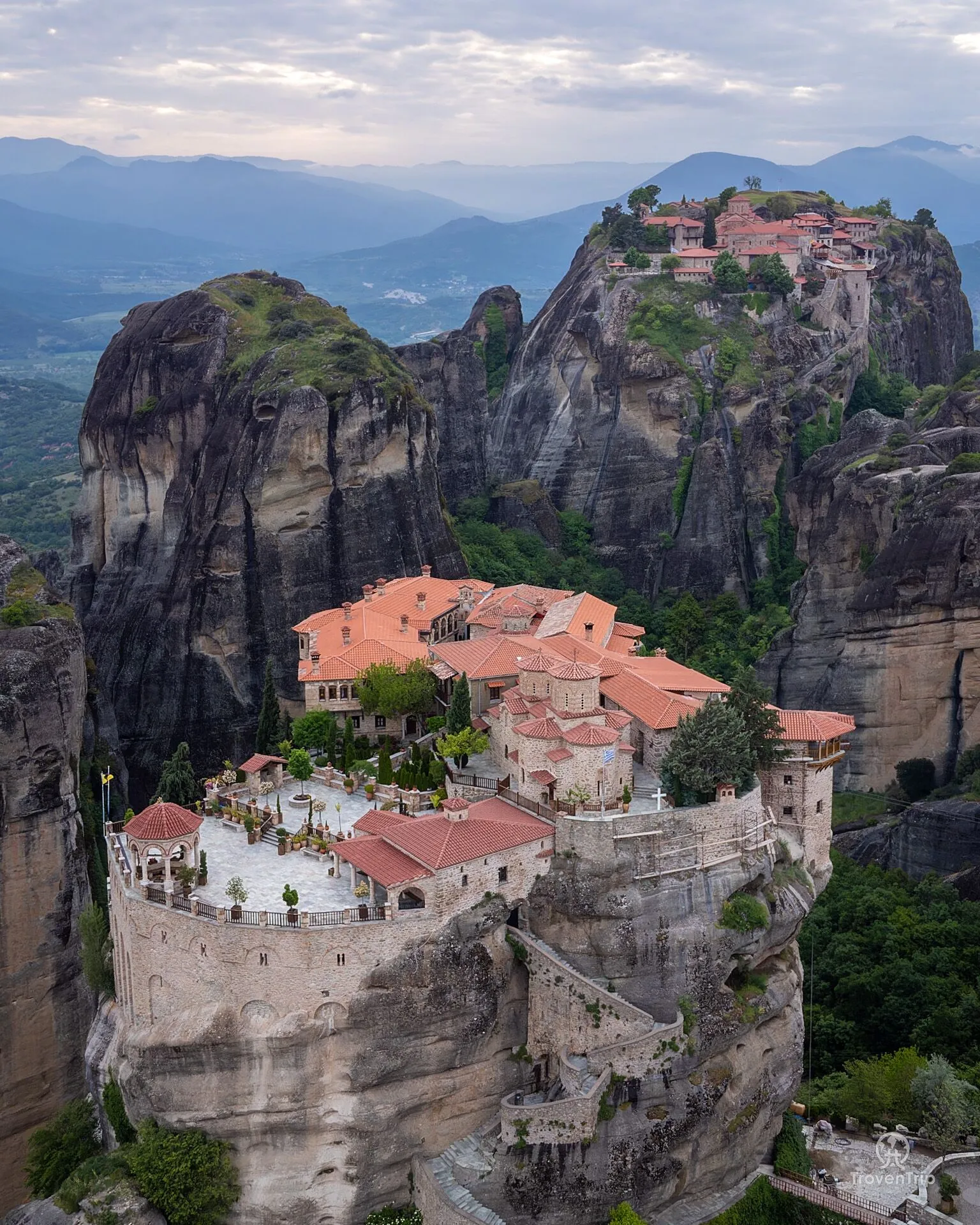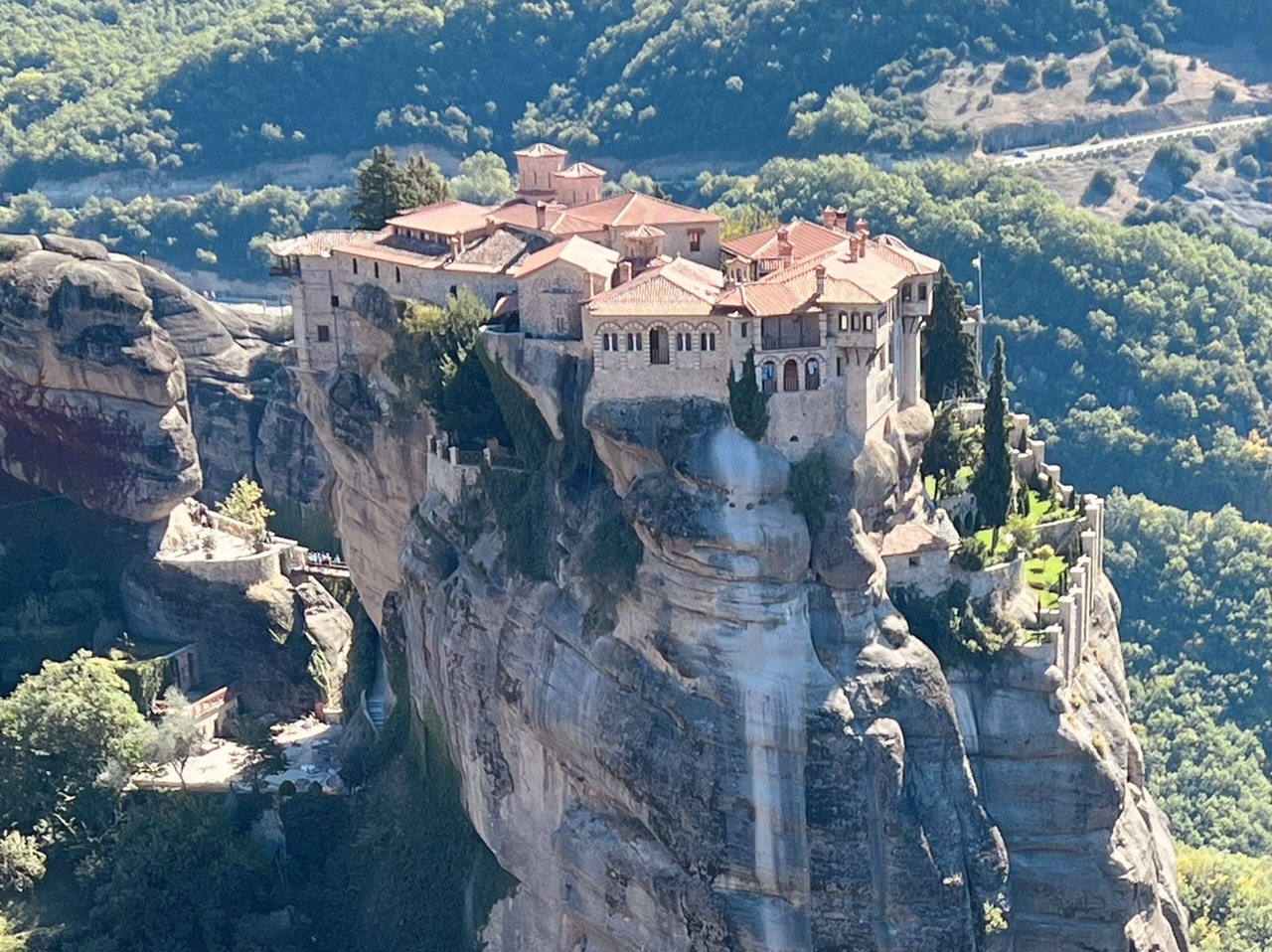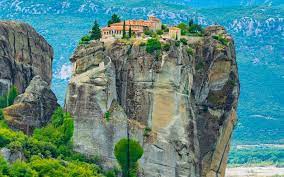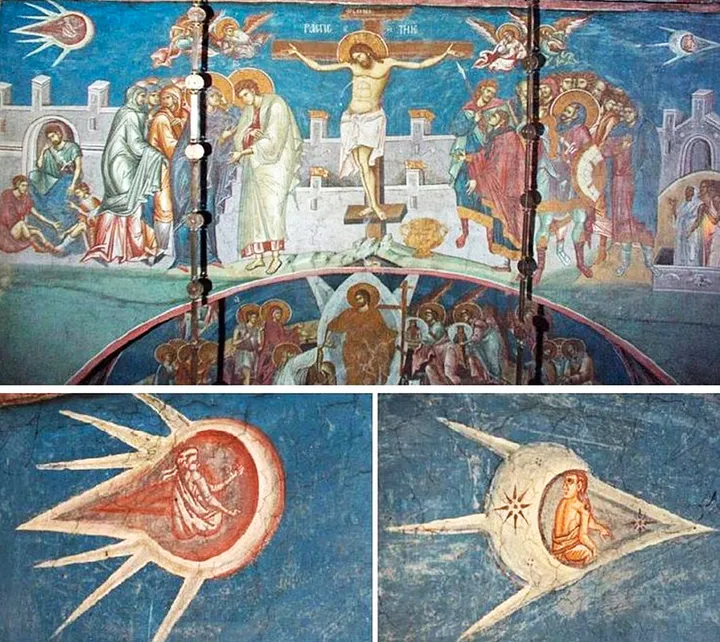Although 24 monasteries were built, each containing a church or two, monks’ cells, and a refectory, only 6 remain: Great Metéoron, Varlaám (also called All Saints [Áyioi Pándes]), Roussanou, St. Nikolas (Áyios Nikolaos), Holy Trinity (Áyia Triada), and St. Stephen (Áyios Stéfanos).

Some still serve a religious function, though they are now only sparsely populated by monks and nuns. Since the construction of paved roads through the area in the 1960s, it has been visited annually by thousands of tourists and Orthodox pilgrims. The monasteries are accessible by bridges and stairs cut into the rocks, although before the 1920s ascending the rock columns involved the perilous enterprise of climbing ladders or being hauled up by ropes and nets.

Conservation efforts have been ongoing since 1972 to counter overall decay and the destruction incurred during World War II, when the area was bombed. Ongoing threats to the structures include vibrations caused by low-flying aircraft and damage relating to the area’s frequent tremors and earthquakes.


Vegetation in the surrounding region is typified by pine and beech forests. Riverine zones provide refuge for gray wolves and otters, among other mammals, and the high cliffs are well-known habitats for the endangered Egyptian vulture and honey buzzard, as well as several species of eagle and falcon. In 1988 the monasteries and their evocative landscape were added to the UNESCO World Heritage List.







